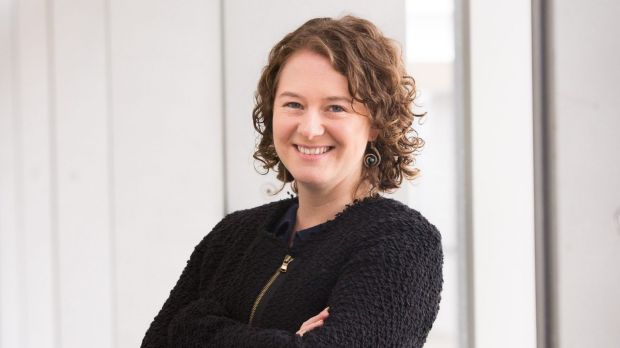
Dr Kat Holt, computational biologist at Melbourne University and Bio21. Photo: Photo: Peter Casamento
The genome of the superbug that has put hospital authorities across the globe on alert has been mapped, raising hopes that scientists could finally tame the bacterial bandit that has been linked to Australian deaths.
Known as Klebsiella pneumoniae, the superbug is resistant to antibiotic treatment and kills about half of those it infects.
In Victoria, a strain called KPC has already been detected in 57 people and is potentially behind the deaths of two patients at St Vincent’s Hospital last year.
The findings by an international team of researchers, including Melbourne University Bio21 scientists, established the bacteria had 30,000 genes – 10,000 more than the human genome. Of these, just 1800 were common to the 300 strains studied.
These shared genes are the ones that researchers will need to target when designing an antibiotic treatment for the bacterial infection or a vaccine to prevent it taking hold.
“Being able to track the bacteria through their genome is really powerful,” said computational biologist at Melbourne University and the Bio21 Institute, Kat Holt. “It means we can monitor individual strains that are spreading in the community.”
The bacteria has been identified by the World Health Organisation and the US Centres for Disease Control as an urgent and immediate threat to human health.
Dr Holt said Klebsiella pneumoniae had been in the top five hospital-acquired infections globally for decades. However, it has not been well studied and scientists know little about how it causes infection.
While single strains of the bacteria have been sequenced in recent years, this is the first time scientists have looked at the family tree to see how the strains are related and gained insights into how the bacteria mutates.
“Every second sample we looked at was a completely new,” she said. “It’s very genetically diverse.”
Dr Holt said the bacteria was an expert at acquiring new genes, which was why it was able to mutate and evade antibiotic treatment so efficiently.
The research team also identified strains that can cause infection serious enough for healthy people to require hospital treatment. These strains shared four common genes, which survived by scavenging iron from their host.
“This is a potential target for drug design,” Dr Holt said. “But the worrying thing is that these four genes are readily passed between the bacteria, which raises the prospect of a much more virulent strain emerging.”
Outlined in the journal PNAS on Tuesday, the study used samples taken from patients in Australia, Singapore, Vietnam, Laos and the United States.
The 48 Australian samples came from patients admitted to the Alfred Hospital 12 years ago who were carrying the bacteria, which had been acquired both before and during their hospital stay.
The Bio21 Institute’s supercomputer at Melbourne University was key to analysing the genome data sequenced by the Wellcome Trust Sanger Institute in Cambridge.
